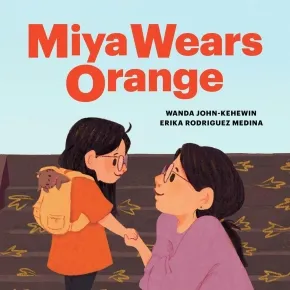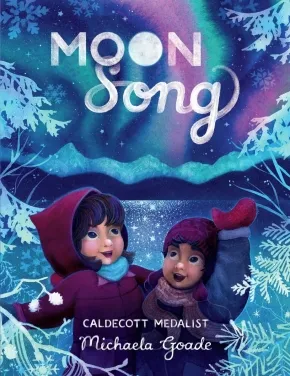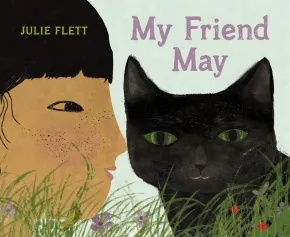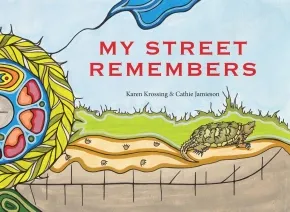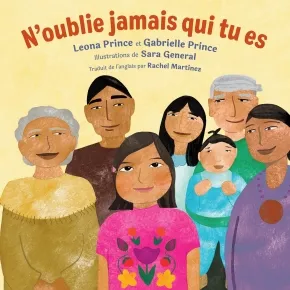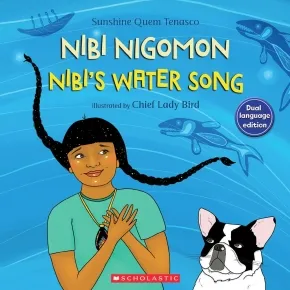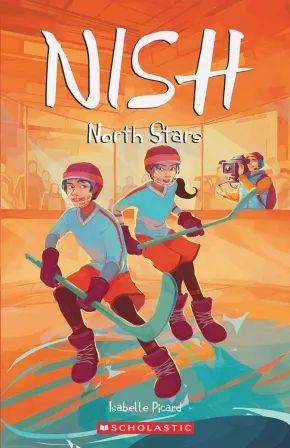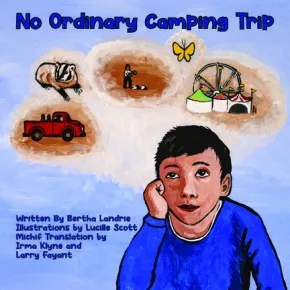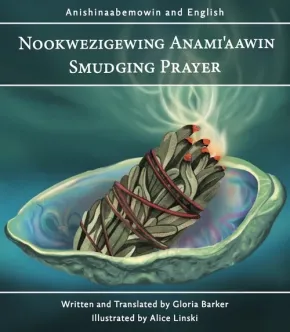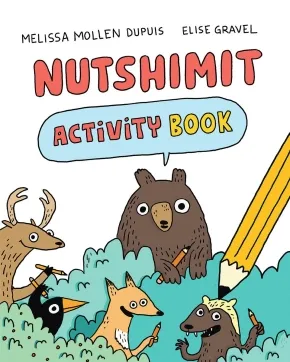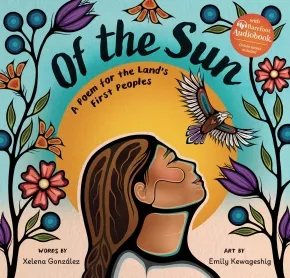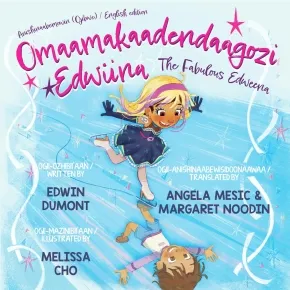
Indigenous Peoples
106
-
120
of
1591 Results;
Sort By
Go To
of 107
Miya Wears Orange
$21.95
Artists:
Format:
Hardcover
Text Content Territories:
Indigenous Canadian; First Nations; Cree (Nehiyawak);
ISBN / Barcode: 9781774921258
Synopsis:
Synopsis:
A beautifully illustrated book that gently explores the complicated feelings a young girl experiences as she learns about tragedy and injustice.
Miya loves her school and she especially loves storytime. One day, her teacher shares a story about a little girl who was taken away to a residential school. The little girl wasn’t allowed to go home. Her hair was cut and she wasn’t allowed to keep her favourite doll. She was taken away from her family because she was Indigenous, just like Miya!
Miya worries the same thing will happen to her. Her mom tells her that Indigenous girls and boys aren’t forced to leave their families anymore. Miya is relieved, but she is still sad. What can she do about these feelings?
Reviews
"A moving and important story that deftly explores the fear a little Indigenous girl feels when she learns the truth about residential schools. Miya finds solace in her mom’s words, and readers will too. A sensitive explanation of residential schools that prioritizes the emotional safety of all readers, especially Indigenous children."— Jen Moss, lecturer at UBC's School of Creative Writing
"opens the door to an important discussion about residential schools" - School Library Journal
Educator Information
Recommended for ages 6 to 8.
In this story, a young girl named Miya feels scared and sad after learning about residential schools, but she learns how to cope with the help of her mother.
A gentle story about big feelings and finding courage.
Big Ideas: Social-Emotional Learning: Emotions and Feelings; Social Justice: Intergenerational Trauma, Residential Schools.
This book is available in French: Le Chandail orange de Miya.
Additional Information
40 pages | 8.50" x 8.50" | Hardcover
Moon Song
$24.99
Artists:
Format:
Hardcover
Text Content Territories:
Indigenous American; Alaska Native; Tlingit;
ISBN / Barcode: 9780316461634
Synopsis:
Synopsis:
Cuddle up with this celebration of winter and explore the wonders of nature’s light with Moon Song from Caldecott Medalist Michaela Goade.
On an island at the edge of a silvery sea, when the moon rises and night falls, a girl spins a story for her worried cousin to help him find comfort in the wintery dark. She invites him to see moonlight glittering in the forest, bioluminescence sparkling by the shore, and northern lights blazing in the sky. In the dark of the night, the whole world sings.
Celebrated Tlingit creator Michaela Goade, who brought us a summer's celebration in the Caldecott Honor Award‑winning Berry Song, invites us to discover the wonder and comfort of a winter's night through a magnificent Moon Song.
Educator Information
Recommended for ages 4 to 8.
Additional Information
40 pages | 9.00" x 11.75" | Hardcover
Mother Earth: My Favourite Artist
$22.99
Artists:
Format:
Hardcover
Text Content Territories:
Indigenous Canadian; First Nations; Cree (Nehiyawak);
ISBN / Barcode: 9781778540615
Synopsis:
Synopsis:
Have you ever considered Mother Earth to be an artist? A shiny rock, the guiding tracks of a bird, a colourful sunset - what beauty do you see on Mother Earth?
Award-winning Indigenous author, CBC journalist, and Poet Laureate of Saskatchewan (2021-2023) Carol Rose GoldenEagle brings readers a radiant tribute to the artwork within the everyday. Paired with stunning illustrations by Hawlii Pichette, Mother Earth: My Favourite Artist encourages us to share in the simple wonder of nature, and honour the precious magnificence of Mother Earth and all of our relatives.
Educator Information
Recommended for ages 5+.
A teacher lesson plan is available: Mother Earth: My Favourite Artist Teacher Lesson Plan
Additional Information
28 pages | 11.00" x 8.50" | Hardcover
My Friend May
$23.95
Artists:
Format:
Hardcover
Text Content Territories:
Indigenous Canadian; First Nations; Cree (Nehiyawak);
ISBN / Barcode: 9781778401718
Synopsis:
Synopsis:
From the winner of the New York Times Best Illustrated Book Prize and the American Indian Youth Literature Award
I’d like to tell you a rather true story about a big black cat who started out gray. Her name was May.
Margaux and her cat May became friends when Margaux was just six years old. They grew up together, sharing countless memories along the way. But one day, May is late coming home. Where is May? Is she under the porch? Maybe on the roof?
Margaux’s nitôsis (the Cree word for auntie) helps search for May in the tall grass. But soon nitôsis needs to leave: she’s moving away to the big city, and has to pack her things into boxes. Margaux helps nitôsis, but she can’t take her mind off May. Will she ever return? nitôsis is worried, too. But little do they know, May has a surprise in store for both of them!
This fun and heartwarming story with a surprise happy ending invites readers to share their own cat stories. My Friend May is a tribute to love and the balance between all beings, and the experiences and emotions that connect us all.
My Friend May features:
- A glossary of Cree words used throughout the book
- Backmatter content that includes a pronunciation guide
Reviews
"A quiet yet affectionate tribute to familial relationships of all stripes….Cat lovers… will particularly enjoy this sweet tale."—Kirkus Reviews
"From a talented picture book creator….Readers can reflect on great stories of their own encounters with beloved animal friends and share their tales with others….delightful.”—School Library Journal
"Award-winning author Julie Flett has created another beautiful story, perfect for read-alouds in kindergarten to grade three classrooms.... This heartwarming tale gently explores themes of love, loss, and reunion. With Flett’s signature artwork and tender storytelling, My Friend May will resonate with readers of all ages and spark connections to their own stories of friendship and change." - Debra H., Elementary School Teacher, Indigenous Books for Schools
Educator Information
Recommended for ages 4 to 8.
This title is included in the Indigenous Books for Schools database from the Association of Book Publishers of BC as a recommended resource for K to 3 English Language Arts.
Additional Information
40 pages | 11.00" x 9.00" | Hardcover
My Street Remembers
$21.99
Format:
Hardcover
Text Content Territories:
Indigenous Canadian;
ISBN / Barcode: 9781773066356
Synopsis:
Synopsis:
How many footsteps have walked your street in the past? My Street Remembers peels back the history of one city street in North America to reveal the greater story of the land on which we live.
The story begins 14,000 years ago, when mammoths roamed the icefields, and the First Peoples followed their trail. Historically accurate illustrations show the lives of their descendants over thousands of years as they hunted and gathered food, built homes and celebrated together, until the 1600s, when Europeans arrived with settlers in their wake.
In lyrical text, the street remembers agreements to live in peace, the efforts of the British to take the land with unfair treaties, and the conflict and suffering that followed. The street recalls its naming, paving and the waves of immigrants who called it home. Illustrations of recent times depict Canada's apology to Indigenous Peoples and efforts toward Truth and Reconciliation, including a march with a banner that reads: Every Child Matters.
This rich collaboration between author Karen Krossing, of White settler descent, and Anishinaabe artist Cathie Jamieson ends with a question that readers anywhere can ask-what does your street remember?
Reviews
"A thoughtful overview and reflection on the life and legacy of a busy street." — Booklist
Educator Information
Recommended for ages 3 to 6.
This book is part of the Better Path series.
Reading Levels: Lexile NC940L
Key Text Features:
- author's note
- bibliography
- captions
- explanation
- facts
- flags
- further information
- historical context
- historical note
- illustrations
- illustrator's notes
- sources
- timeline
- vignettes
- writing inspiration
Correlates to the Common Core State Standards in English Language Arts:
CCSS.ELA-LITERACY.RL.1.3
Describe characters, settings, and major events in a story, using key details.
Additional Information
48 pages | 11.00" x 8.00" | Hardcover
My Visit to Kimmirut
$16.95
Artists:
Format:
Paperback
Text Content Territories:
Indigenous Canadian; Inuit;
Grade Levels: Preschool; Kindergarten;
ISBN / Barcode: 9781774508060
Synopsis:
Synopsis:
What will Monica see and learn when she visits a new community?
Monica is visiting her aunt Peesee in Kimmirut, Nunavut. There are many wonderful things to see and do there. Monica is excited to explore and learn about her aunt's community. Join Monica and Peesee as they go clam digging, visit waterfalls, and see the tallest trees on Baffin Island in this bilingual picture book!
Reviews
"In the story, Monica shares about visiting her aunt in Kimmirut. At the beginning of the story, she explains that the village was renamed with its traditional name (Kimmirut) from its settler name (Lake Harbour). Different cultural elements are explored: resources, arts, food, activities, and land features. As well, there is an exploration of the seasons through images, contrasting the end of summer and winter. Teachers can point out to the students that with the exception of two pages, there are no trees on the landscape. This would be a good introduction to biomes and an inquiry into the arctic tundra. While the book is written for younger students, older students could benefit from the story and extend their learning by engaging in an inquiry project about the traditional Inuktitut names that are increasingly used in Nunavut in an effort to decolonize place names. For instance, Baffin Island’s traditional Inuktitut name is Qikiqtaaluk." - Alethea S., Indigenous Books for Schools
Educator & Series Information
Recommended for ages 3 to 5.
Dual-language: English and Inuktitut
This book is part of the Community Connections series.
This title is included in the Indigenous Books for Schools database from the Association of Book Publishers of BC, recommended for K-5 English Language Arts and Social Studies.
Additional Information
23 pages | 8.00" x 9.00" | Paperback
N'oublie jamais qui tu es
$21.95
Format:
Hardcover
Text Content Territories:
Indigenous Canadian; First Nations; Dene; Dakelh (Carrier); Lake Babine Nation ; Nak’azdli Whut’en; Beaver Clan (Lhts'umusuyoo);
Grade Levels: Preschool; Kindergarten;
ISBN / Barcode: 9781459841772
Synopsis:
Synopsis:
Tu as plus de pouvoir que tu le crois.
Ce livre aux illustrations lyriques parle aux jeunes de leurs racines culturelles, de la sagesse de leurs ancêtres et de leur propre potentiel. Chaque page propose une affirmation sur l’identité, le respect, l’amour et la vérité, encourageant tous les enfants à accepter leurs dons et leur pouvoir uniques. En abordant la résilience qui coule dans leurs veines et les savoirs inscrits dans le ciel, N’oublie pas qui tu es inspire les enfants à se considérer comme des membres à part entière de leur communauté, comme des personnes capables à la fois d’un grand leadership et d’une grande gentillesse.
Parfait pour la lecture à l’heure du coucher et les discussions en classe, l’album favorise un profond sentiment d’appartenance et de fierté en célébrant l’héritage autochtone et en rappelant aux jeunes lecteurs qui ils sont vraiment. Également disponible sous le titre Remember Who You Are en anglais.
Educator Information
Recommended for ages 3 to 5.
This book is available in English: Remember Who You Are.
This book is available in a dual-language format: Remember Who You Are / kiskisi awîna kiya.
Additional Information
32 pages | 9.00" x 9.00" | Hardcover
Nibi nigomon/Nibi's Water Song
$8.99
Format:
Paperback
Text Content Territories:
Indigenous Canadian; First Nations; Anishinaabeg;
ISBN / Barcode: 9781039700673
Synopsis:
Synopsis:
Nibi is determined to bring clean water to her community.
Nibi is the Anishinabemowin word for water. In Nibi’s Water Song, Nibi is an Indigenous girl on the search for clean water to drink. Though she is faced with repeated obstacles, Nibi’s joyful and determined energy becomes a catalyst for change and action as her community rallies around her to make clean drinking water available for all.
First published in 2020, Nibi’s Water Song was shortlisted for both the IODE Jean Throop Award and longlisted for the First Nations Communities READ Award. This dual-language edition presents the text in both English and Anishinabemowin.
Educator Information
Recommended for ages 4-8.
Dual-language: English and Anishinabemowin
Translated by Tina Nottaway. Tina is an Algonquin Anicinabe Ikwe artist and translator from Rapid Lake, Quebec. She is fluent in her language, Anicinabemowin. Tina is also a crafter and facilitates workshops on moccasin making, birchbark basket making and other cultural activities.
This resource is available in English: Nibi's Water Song
This resource is also available in French: Nibi a soif, très soif
Additional Information
32 pages | 9.51" x 9.51" | Paperback
Nish: North Stars
$14.99
Text Content Territories:
Indigenous Canadian; First Nations; Innu (Montagnais-Naskapi);
ISBN / Barcode: 9781039710818
Synopsis:
Synopsis:
Lights. Cameras. Hockey!
The school year is finally over and Eloise and Leon are back in Matimekush for the summer. But this school break will not be like any other, thanks to a hockey movie being filmed in the community! Is it possible that Leon will be in the movie? Will Eloise, who is interested in directing, participate in the project? Summer will be busy with twists and turns of all kinds for Leon, Eloise and their friends. It's the summer of possibilities!
Educator & Series Information
Recommended for ages 10 to 14.
Translated by Kateria Aubin Dubois, a freelance translator and a prolific beadworker. Her beadwork can be found under her Indigenous name, Nisnipawset. Kateri is from the Wolastoqiyik Wahsipekuk First Nation. She lives with her husband, two children and a fluffy cat in Terrebonne, Quebec.
This is the third book in the Nish series.
Additional Information
240 pages | 5.00" x 7.75" | Paperback
No Ordinary Camping Trip
$17.50
Artists:
Format:
Paperback
Text Content Territories:
Indigenous Canadian; Métis;
ISBN / Barcode: 9781988011363
Synopsis:
Synopsis:
In No Ordinary Camping Trip, Bertha Landrie recounts a tale from her husband, Joe’s, childhood. Many Métis families relied on seasonal employment, working for farmers, clearing fields, picking Seneca root, and other labour jobs to support themselves. In this coming-of-age story, a young Joe works hard picking rocks in order to make money to go to the North Battleford Fair. Will they be able to finish the job in time? Lucille Scott’s evocative illustrations take us back in time while capturing the story’s essence. Michif Old Ones, Irma Klyne and Larry Fayant provide a Southern Michif translation—the language of the Landrie family.
Reviews
"Rich in cultural detail, the story introduces young readers to aspects of Métis culture and values. The book celebrates themes of family, resilience, and identity. Suitable for grades three to five Social Studies and Language Arts, it supports curricular goals related to Indigenous perspectives, cultural diversity, and belonging, while promoting early bilingual literacy through its inclusion of Michif. Narrations in English and Michif are available through a link provided by the publisher, and supplementary information about the Road Allowance period in Métis history is also provided." - Bonny-Lynn D., Elementary School Teacher, Indigenous Books for Schools
Educator Information
Recommended for Grades 3 to 5.
Dual-language format: Michif and English.
Themes: Childhood; Coming of Age; Family; Intergenerational Roles
This title is included in the Indigenous Books for Schools database from the Association of Book Publishers of BC. It's recommended for Grades 3 to 5 for English Language Arts and Social Studies.
Additional Information
37 Pages | 9" x 9" | Paperback
Nookwezigewing anami'aawin / Smudging Prayer
$9.99
Artists:
Format:
Paperback
Text Content Territories:
Indigenous Canadian; First Nations; Anishinaabeg; Ojibway; Hollow Water First Nation (Waanibiigaaw / Wanipigow);
ISBN / Barcode: 9781779550224
Synopsis:
Synopsis:
Written by Gloria Barker, Language Teacher from Hollow Water First Nation, which is located on the east side of Lake Winnipeg, Canada. Hollow Water First Nation is also known as Waanibiigaaw or Wanipigow in Ojibwe. Illustrated by Alice Linski; Alice RL is a member of Ne-biimiskonaan (Skownan) First Nation, Treaty 2 Territory. Alice is a Two-Spirit Anishinaabe artist, illustrator, and art teacher based in Winnipeg, Manitoba. Alice draws inspiration from life experiences and cultural teachings. Alice blends these inspirations with a signature palette of bright, playful hues to create stunning emotional juxtapositions of trauma and grief with hope and a touch of whimsy.
Educator Information
The publisher recommends this work for all ages.
This book is delivered in a dual-language format of Anishinaabemowin and English.
This book is also available in English: Smudging Prayer
Additional Information
Paperback
Nutshimit: Activity Book
$18.99
Artists:
Format:
Paperback
Text Content Territories:
Indigenous Canadian; Métis; Inuit; First Nations; Innu (Montagnais-Naskapi);
ISBN / Barcode: 9781039711778
Synopsis:
Synopsis:
Add your favourite toppings to the bannock, draw some animals that live in the woods and write down a joke that would make cranky Wolverine laugh!
With almost 90 big pages of creative fun based on the bestselling Nutshimit: In the Woods, written by Melissa Mollen Dupuis and illustrated by Elise Gravel, this activity book encourages children to learn and have fun with nature.
Includes colouring pages, word searches, connect-the-dots, picture-prompts, spot-the-differences, DIY comic pages and much more to keep young forest enthusiasts engaged and entertained.
Educator Information
Recommended for ages 6 to 8.
Find the accompanying book here: Nutshimit: In the Woods
This activity book is available in French: Nutshimit: Le cahier d'activités
Additional Information
96 pages | 8.01" x 9.99" | Paperback
Of the Sun: A Poem for the Land's First Peoples
$22.99
Format:
Hardcover
Text Content Territories:
Indigenous American; Indigenous Canadian; Indigenous Caribbean; Indigenous Peoples in Mexico; Indigenous South American;
Grade Levels: Preschool; Kindergarten;
ISBN / Barcode: 9798888596500
Synopsis:
Synopsis:
A powerful and hopeful ode to Indigenous children.
Indigenous. Native. On this land, you may roam.
Child of the sun, on this land, you are home.
Of the Sun is an uplifting and mighty poem that wraps the Indigenous children of the Americas in reassuring words filled with hope for a brighter future and reminders of their bond and importance to the land. Each page fills them with pride and awe of their cultural heritage and invites them to unite and inspire change in the world.
Paired with powerful art reflecting cultures of various Indigenous Nations and Tribes, the poem offers all readers a sense of the history and majesty of the land we live on and how we can better care for ourselves and the world when we recognize our connection to the land and to each other.
Written by Xelena González, poet and activist in the Native and Latinx communities, and an enrolled member of the Tap Pilam Coahuiltecan Nation. Bold illustrations by prominent Anishinaabe illustrator Emily Kewageshig depict landscapes across the Americas and children from many backgrounds
Endnotes provide more information on Native and Indigenous unity and activism in younger generations
Reviews
"Of The Sun is a loving homage to the Indigenous peoples of this land—both in González’s beautiful, lyrical poem and Kewageshig’s warm, vibrant Anishinaabe-styled artwork. A wonderful read aloud you must add to bookshelves at home, at school, and in community!" - Traci Sorell, award-winning author of We Are Grateful Otsaliheliga and At The Mountain’s Base
"A luminous song, poem, promise
of cultures and connection,
of kinship and caring,
for Indigenous children across the continent." - Cynthia Leitich Smith, author of Jingle Dancer
Educator Information
Recommended for ages 3 to 5.
Subjects / Themes / Topics Included: Indigenous Peoples in the Americas; Poetry; Land Connection; Inuit Clothing; Traditional Hair Bun (tsiiyéél); Concheros Dance; Three Sisters; La Danza de la Flor de Piña; Smoke Dance; Jingle Dress Dance; Manoomin (Wild Rice); English Words from Indigenous Languages; Indigenous Farming Practices; Bison; Land Back Movement.
Additional Information
32 pages | 10.00" x 9.75" | Hardcover
Omaamakaadendaagozi Edwiina / The Fabulous Edweena
$21.95
Artists:
Format:
Hardcover
Text Content Territories:
Indigenous Canadian; First Nations; Anishinaabeg; Ojibway;
ISBN / Barcode: 9781772604078
Synopsis:
Synopsis:
Edwin loves his sister Patsy's closet. He adores dresses and earrings and boots with high heels. And when he's finished getting dressed, Edwin is transformed...into the fabulous Edweena!
Today is the figure skating competition at school and Edwin has decided to compete as Edweena. What will people say when they meet her for the first time? Can a boy in drag win the competition? Edweena will have to give her best performance ever to find out!
Reviews
"Edwin Dumont’s The Fabulous Edweena is written in English and celebrates the Anishinaabemowin (Ojibwe) language through translations by Angela Mesic and Margaret Noodin. Inspired by Dumont’s own childhood experiences—including dressing up in his sisters’ clothes—the story follows Edweena as she prepares for a local figure skating competition. Though nervous about how others might react, Edweena sees the event as a chance to express herself through drag. Cautiously, she takes to the ice in her sisters’ clothes—and is met with unexpected support and encouragement. This heartwarming story highlights the courage it takes to be true to yourself and reminds readers that authenticity, even when scary, can lead to acceptance and joy." - Debra H., Elementary School Teacher, Indigenous Books for Schools
Educator Information
Recommended for ages 6 to 8.
Dual-language: Anishinaabemowin (Ojibwe) and English.
This book is available in English: The Fabulous Edweena
This title is included in the Indigenous Books for Schools database from the Association of Book Publishers of BC. It is recommended for Grades 1 to 3 for English Language Arts and Physical and Health Education.
Additional Information
24 pages | 8.50" x 8.50" | Hardcover
On y va!
$21.95
Artists:
Format:
Hardcover
Text Content Territories:
Indigenous Canadian; First Nations; Cree (Nehiyawak);
ISBN / Barcode: 9782897771706
Synopsis:
Synopsis:
Chaque jour, un petit garçon regarde des enfants passer en planche à roulettes et rêve de les rejoindre. Un jour, sa mère lui apporte une surprise : sa vieille planche, juste pour lui ! haw êkwa ! On y va ! Ensemble, ils le font, pratiquant sur le trottoir, au parc — partout. Mais quand vient le moment de pratiquer au parc, les planchistes dévalent les pentes comme une cascade. Pourra-t-il trouver la confiance pour les rejoindre?
Reviews
“L’album s’installe dans la chaleur de ce partage, et dans l’ivresse de leur essor. Il suit l’évolution d’un garçon d’abord paralysé par la timidité, puis électrisé par la confiance en soi.”— Télérama
“Julie Flett signe ici un somptueux quatrième album qui regorge d’émotions et qui fait honneur à l’amitié et à la persévérance. Avec ses pastels, Julie Flett exprime aussi la joie de vivre, le plaisir de s’exercer à ce sport, à cette passion qu’elle aime partager avec ses lecteur·rice·s!”— Lu et partagé
“La liberté de la déambulation en skateboard faite livre. [...] Crie-métisse, l’autrice-illustratrice Julie Flett mêle l’apprentissage de l’exercice d’un sport à celle d’une langue.”— Maze
Educator Information
Recommended for ages 6 to 8.
Curriculum Connections: Sports / Indigenous Languages / Community / Goal-Setting / Risk-Taking / Self-Awareness / Self-Confidence
This book is available in English: Let's Go! haw êkwa
Additional Information
44 pages | 11.00" x 9.00" | Hardcover
Sort By
Go To
of 107

